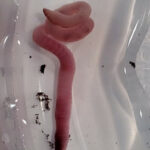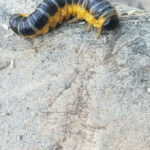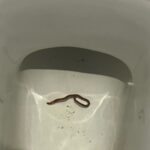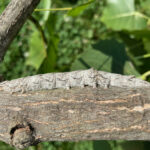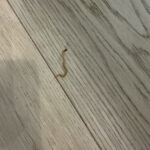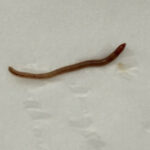While there are more than 300-500 species of living, breathing peanut worms in existence today, there are dozens of “peanut worms” floating around in cyberspace. Yes, it’s true – the peanut worm is also a computer virus!
About Computer Worms and Viruses
Worms, including the peanut worm, are actually sub-class of viruses. A computer virus is not unlike a biological virus. It is a self-replicating computer program that spreads by inserting copies of itself into other executable code or documents. The insertion of a computer virus into the program is called an “infection.” The infected file or executable code that is not part of a file is called a “host.” Viruses are one of the several different types of malicious software or “malware.”
Worms can spread from computer to computer, travel across networks, and copy your address book in order to send itself to all of your contacts. Worms can freeze or disable entire servers. Some of the most sophisticated worms can actually tunnel into your computer and give users remote access to your system. While viruses and worms can spread, much like an infection, there is one malicious software program that does not self-replicate. However, it can be just as harmful to your computer as a virus or worm. It’s called a “Trojan Horse.”
A Trojan Horse, or just “Trojan,” will present itself as a helpful program, but once you install it on your computer, it will wreak havoc on your system almost immediately. A Trojan Horse may appear in the form of a file or software program that has been sent from a legitimate source. The Trojan Horse will install and a number of things can happen. Some Trojans will simply rearrange your desktop or add annoying icons to your desktop and others will delete entire files. Some of the more advanced Trojans can open the door to predators looking to steal your identity. These types of Trojans can give users unlimited access to your system.
How to Prevent and Get Rid of Worm Viruses
Never, ever click on links in an email message, even if you think they are from a reliable source. To avoid unleashing a worm virus, copy and paste the link into your address bar. Better yet, don’t bother opening the link at all.
- Never open email attachments from unknown senders. Even if you are a little skeptical, don’t open the attachment, period.
- Pay attention to the sites you visit online. Some websites are specifically designed to deliver malware
- Don’t cut corners. Install a firewall application on your computer. You might have a bit of trouble while surfing, but it’s well worth it. A firewall will prevent intruders from loading malware on your computer.
- Bite the bullet. Purchase security software that can detect any known and even evolving strains of malicious software.
Just a few effective malicious software and worm virus removal tools include: BitDefender, Kaspersky, Norton and McAfee. Please keep in mind that these software programs are not free. While you free malicious software removal tools are available, they might not be as effective as the tools with a price tag. If you want top-notch security, it’s best to install BitDefender, Kaspersky, or McAfee.
To “Free” or not to “Free”
To get rid of malicious software programs like the peanut worm, there are a number of free malicious software removal tools available. You can download them directly from the web. Before you download any malicious software removal tool, you must make sure that the download is from a trusted source. If you are running Windows, stick with Microsoft software downloads. Microsoft offers its “Windows Malicious Software Removal Tool” free of charge for its Windows operating system. The great thing about this free worm removal tool is that it updates once a month and reports if malicious software is found.
From Microsoft:
The Microsoft Windows Malicious Software Removal Tool checks Windows XP, Windows 2000, and Windows Server 2003 computers for and helps remove infections by specific, prevalent malicious software including Blaster Worm, Sasser, and Mydoom. When the detection and removal process is complete, the tool displays a report describing the outcome, including which, if any, malicious software was detected and removed. The tool creates a log file named mrt.log in the %WINDIR%\debug folder. Version 1.30 adds Win32/Allaple to the list of malicious software this tool detects.
You can download directly from the Microsoft website or Cnet.com.
All About Worms is always free, always reader-supported. Your tips via CashApp, Venmo, or Paypal are appreciated! Receipts will come from ISIPP Publishing.



